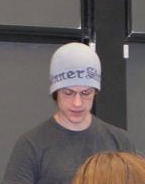Chris Douglas '05
Title: A Possible Implementation of a Cryptographic Filesystem
Abstract: At present, the methods for encrypting one s data are
fairly ad-hoc. While the Internet is considered public and a worthy
forum for protecting sensitive data, personal computers and servers
are considered to be private. Any server administrator knows that the
partition of public/private by ownership is a tenuous one; truly
sensitive data ought to be protected by stronger means bound to the
characteristics of the data and not to the fictitious analog of
possession. Especially for those storing their data on or passing it
through machines for which security is peripheral, misunderstood, or
poorly implemented,1 reliable data protection ought to be implemented
apart from the mechanisms that facilitate system administration. UNIX
permissions, for example, provide inadequate protection against
crackers. Should one gain access to the superuser account (using a
rootkit or other exploit), then carefully crafted permissions schemes
can be bypassed without ceremony. The goal of a cryptographic
filesystem should be to obscure users data from all other
users. Regrettably, absolute security is impossible, but one could
conceive of a filesystem that- even given a compromise of a privileged
account- could limit access to an attacker. We explore the mechanisms
and guarantees that might mitigate access.
|

|

